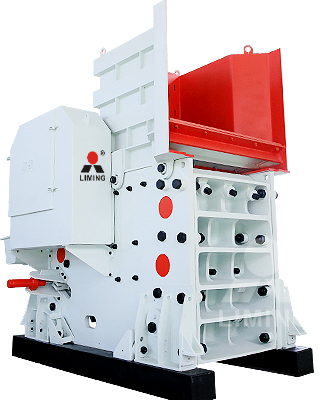Since the work of the jaw crusher is periodic, the load of the motor will inevitably change periodically, resulting in an extremely unbalanced load. Therefore, large crushers are generally provided with a flywheel at each end of the eccentric shaft (one of the flywheels is also used as a pulley), while the flywheel of small and medium-sized crushers can be made one. According to the principle of inertia, the crusher can store energy during the non-working stroke, and release it during the working stroke, thereby making the motor load evenly.

The transmission mechanism of the pendulum jaw crusher is mainly composed of pulleys, eccentric shafts, connecting rods and front and rear thrust plates. The upper part of the connecting rod in the main bearing supported by the eccentric shaft on the side wall of the frame is installed on the eccentric position of the eccentric shaft. When the motor drives the eccentric shaft to rotate, it drives the connecting rod to move up and down due to the eccentricity, thereby driving the thrust plate to move. As the thrust plate continuously changes its inclination angle during movement, it drives the movable jaw to swing periodically around the eccentric shaft of the suspension, so as to achieve the secondary effect of crushing the ore. In order to ensure that the movable jaw and the thrust plate are tightly combined, a tensioning device consisting of two pull rods and a spring is usually used. When the movable jaw swings, it can not only ensure that the movable jaw and the thrust plate will not be separated, but also partially balance the inertial force generated by the movable jaw and the thrust plate.
